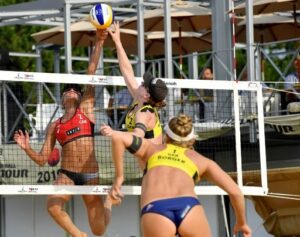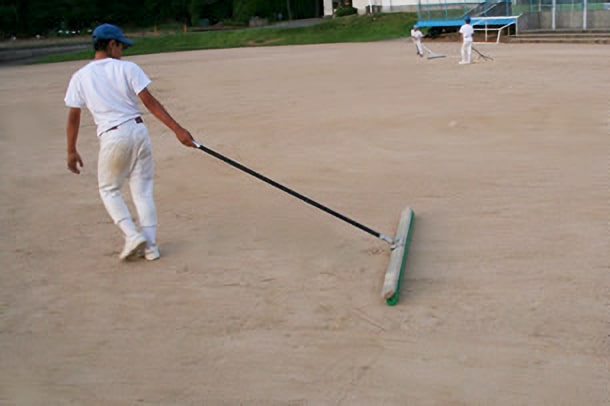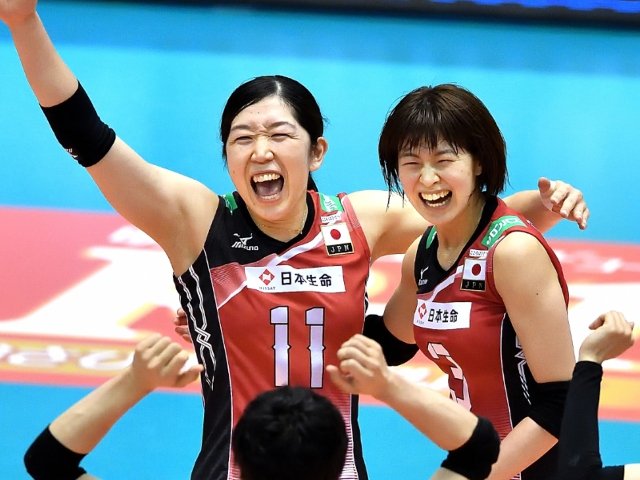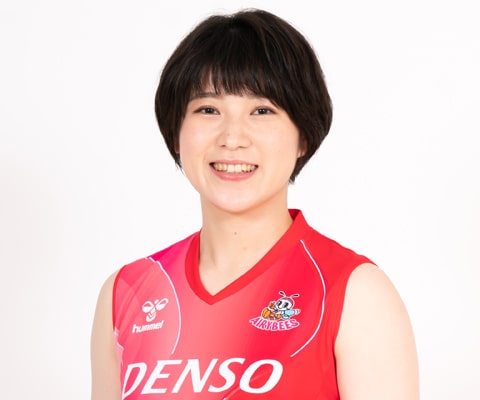
Beach volleyball is more than just summer fun; it’s a sport that requires deep strategy and precise technique.
In order to respond to the countless situations that players face, it is essential not only to hone your skills, but also to have tactical knowledge.
In this article, we’ll take a deep dive into the tactics that are the key to winning in beach volleyball, and show you how to decipher the flow of the game and outwit your opponent.
Here, we will explain in detail the tactical approach to winning the match, from how to start the game starting with the serve, effective reception, the secret of attack, building a solid defense, and most importantly, cooperative play with partners. I will explain.
We will also touch on the mindset needed to calmly choose and adapt tactics during a match.
By understanding and practicing beach volleyball tactics, your play will evolve to a new dimension.
We hope this guide will help you outwit your opponents and make the most of your skills and tactics in your next match.
目次
- 1 Basics of beach volleyball tactics : A tactical approach that leads to victory
- 2 Serving strategy : The first move to lead the game
- 3 Receiving strategy : Grasp the flow with stable receiving
- 4 Offensive tactics : Actively earn points
- 5 Defensive tactics : Defend with blocks and digs
- 6 Cooperative play tactics : optimal cooperation with partners
- 7 Tactical Mindset : Thinking and adjusting during the match
- 8 summary
Basics of beach volleyball tactics : A tactical approach that leads to victory
In order to win in beach volleyball, you not only need to hone your technique, but you also need to control the game from a tactical perspective.
Here, we will explain how to read the flow of the game, analyze the opponent team, and take countermeasures as a tactical approach that will lead to victory.
How to read the flow of the game
- Opening Observation : Carefully observe the opponent team’s strategy and style of play from the beginning of the match. You can glean a lot of information from early play, including serve trends, attack patterns, and defensive placement.
- Point-by-point analysis : In beach volleyball, the game resets every point. Analyzing the opposing team’s reactions and adjustments after each point and being flexible in changing your game plan is the key to victory.
- Strategies when leading and being led : Understanding the flow of the game will help you change your tactics when leading and being led. When you are in the lead, avoid risks and play consistently, and when you are in the lead, actively look for opportunities to score points.
Analysis and countermeasures of the opposing team
- Identifying Opponent’s Strengths and Weaknesses : Analyze the opposing team’s playing style and specifically identify their strengths and weaknesses. For example, we can identify players who are weak at serve-receive or who tend to rely on specific attack patterns.
- Customized defense strategy : Adjust your defense strategy according to the opposing team’s attack patterns. For players with high offensive power, it is necessary to respond depending on the situation, such as thickening blocks or placing emphasis on digging.
- Adaptation of attack strategy : Adapt attack strategy to exploit the opposing team’s defensive posture. Overwhelm the opposing team by focusing attacks on weak areas and incorporating plays that are difficult to predict.
In beach volleyball, tactical knowledge as well as technique can lead players to victory.
By deciphering the flow of the game, accurately analyzing the movements of the opposing team, and taking appropriate strategies and countermeasures, you can advance the match to your advantage.
This process is honed through experience and practice, allowing you to compete at a high level.

Serving strategy : The first move to lead the game
In beach volleyball, the serve is an important opening move to lead the game and put pressure on your opponent.
There are various types of serves, and it is important to use them properly depending on the situation and strategy.
Also, aiming for a service ace gives you a huge advantage in the game.
Here, we will explain the types of effective serves, how to use them properly, and tips for aiming for an ace.
Effective types of serves and how to use them properly
- Floater serve : A serve that is hit without applying any rotation to the ball, and its trajectory tends to be irregular. This is especially effective for outdoor beach volleyball, as it is easily affected by the wind. Floater serves are good for creating situations that are difficult for the receiver to predict.
- Jump serve : A powerful, aggressive serve in which you jump and then hit the ball hard. Being able to overwhelm your opponent with speed and power makes it easier to aim for an ace, but it also increases the risk of making a mistake.
- Skyball serve : A serve that launches the ball very high, especially effective when the sun is strong. This can obstruct the receiver’s view and make timing difficult.
Tips for aiming for a service ace
- Target your opponent’s weaknesses : Find out your opponent’s weak points in their serve/receive from pre-match observations and past information, and intentionally target those areas. It is effective to aim at the hand that is weak at receiving (usually your non-dominant hand) or at a specific position on the court (for example, in front of you or near the line).
- Serve variation : Rather than always using the same type of serve, use floaters, jump serves, sky balls, etc. depending on the situation to confuse the receiver. By changing the speed, angle, and landing point of your serve, you make it more difficult to predict.
- Take advantage of environmental conditions : Incorporate outdoor environmental conditions into your serve strategy, such as wind direction and strength and the position of the sun. By hitting a floater serve from upwind to downwind, you can amplify the irregular movement.
Mastering serve tactics will give you a huge advantage in beach volleyball matches.
By understanding the types of serves and choosing the best serve for each situation, you can put pressure on the opposing team and control the flow of the match in your favor.

Receiving strategy : Grasp the flow with stable receiving
Receiving in beach volleyball is the basis for effectively receiving the opponent’s serves and attacks and controlling the flow of the match in your team’s favor.
Stable receiving acts as a turning point from defense to attack and has a big impact on winning or losing the game.
Here, we will explain positioning and prediction techniques to improve your receiving tactics, as well as practice methods to achieve high receiving accuracy.
Positioning and forecasting techniques
- Proper Positioning : Successful receiving starts with proper positioning. Always be aware of your position on the court, and move to the most effective receiving position while assessing the position of your opponent, the direction of their body, and the movement of the batter. Positioning must be adjusted flexibly depending on the direction and speed of the serve.
- Improved predictive ability : Anticipating your opponent’s serve and attack intentions is essential for good receiving. Predict which direction the ball will come from based on your opponent’s line of sight, shoulder direction, and arm swing. This ability to predict is developed through experience and practice.
Practice method to achieve high receiving accuracy
- Learning basic posture : Learn the basic posture for stable receiving. Bend your knees to lower your center of gravity and extend your arms in front of you, ready to receive the ball. From this basic position, you can move quickly depending on the direction and speed of the serve.
- Ball control practice : In order to improve receiving accuracy, it is important to improve ball control techniques. Practice controlling balls that come at different heights and speeds and sending them accurately to the setter. By pairing up with a partner and practicing practical receiving, you will be able to receive accurately according to the situation.
- Incorporate anticipatory practice : Practice anticipating serve trajectories and attack patterns to increase reaction speed. By observing your opponent’s movements, predicting what kind of serve or attack will come, and actually practicing receiving, you can simultaneously improve your prediction ability and receiving accuracy.
Mastering receiving tactics is the key to gaining an advantage in beach volleyball matches.
By practicing proper positioning, improving your anticipatory abilities, and practicing ball control, you will be able to support your team with consistent reception and control the flow of the game in your team’s favor.

Offensive tactics : Actively earn points
Attack tactics in beach volleyball are an important element that changes the flow of the match.
In order to actively earn points, the key is to properly select spikes and shots, as well as make full use of feints and trick shots.
Here, we will explain when and how to use these attack methods, their selection criteria, and how to use them effectively.
Criteria for selecting spikes and shots
-
Spike selection : Spikes are a powerful offensive tool and the most direct way to break through your opponent’s defense. The criteria for choosing spikes are when the set ball comes high and accurately, when the defense on the opponent’s court is unstable, or when the block is weak or not present at all. The important thing is to land a powerful ball from a high point into an open area of the opponent’s court.
-
Shot selection : Shots are delicate shots that defy your opponent’s expectations and aim to go over the blocker or into the gap between the blocks. Shots are effective when the opponent is defending deep, has strong blockers, or when the opponent is moving slowly. The key is to watch your opponent’s movements and aim for the most open area.
Effective feints and trick shots
-
Using feints : A feint is a technique where you pretend to hit a spike and end up just touching the ball lightly. This is a tactic that makes the opponent’s blocker jump and then slowly drops the ball into an open area of the opponent’s court. To successfully perform a feint, it is important to take the same approach as a spike, but change the strength of the ball at the last moment.
-
Use of trick shots : Use a variety of trick shots, such as the pokey shot (a shot that you push out with your fingertips), the cut shot (a shot that cuts the ball diagonally), and the lob shot (a shot that launches the ball high and drops it behind the opponent). You can mess up your opponent’s predictions. It is especially effective during tense matches or when you can read your opponent’s defensive patterns.
The success of your offensive tactics depends on constantly observing your opponent’s position and movements and choosing the most appropriate method according to the situation.
Victory in beach volleyball is achieved by using spikes and shots appropriately, as well as using feints and trick shots to outwit the opposing team and actively earn points.

Defensive tactics : Defend with blocks and digs
In beach volleyball, not only attack but also defense is very important. In order to control the match and forge a path to victory, solid defensive tactics that make full use of blocks and digs are required.
Here, we will explain how to build a team defense and how to place blocks to respond to the opponent’s attack patterns.
How to build a team defense
- Define the field : Define the field within your team and decide in advance which players will cover which areas of the court. This prevents duplicates and unprotected spaces from being created.
- Strengthening communication : Communication with partners is very important on defense. It is necessary to share and constantly update information on block intentions, dig preparations, and predictions about the opponent’s attacks.
- Implementation of defensive practice : Defensive practice based on actual matches will be held regularly to establish not only blocking and digging techniques, but also positioning and movement patterns when defending.
Block placement that corresponds to the opponent’s attack pattern
- Understanding the role of blockers : Blockers not only directly block the opponent’s spikes, but also limit the angle of the spikes and create conditions that make it easier to dig. The blocker understands the tendencies of the opponent’s attackers and chooses the most effective blocking position.
- Adjusting the timing and height of the block : In order to block effectively against the opponent’s spikes, it is necessary to adjust the timing of the jump and the height of the block appropriately. Predict the timing of your opponent’s spike so you can block at the highest point.
- Changing defense patterns : It is important to flexibly change defense placement and patterns depending on the opponent’s attack patterns and strategies. For example, if your opponent specializes in powerful spikes, you will strengthen your blocking, and if your opponent uses skillful shots, you will focus on digging, etc., and develop defensive tactics depending on the situation.
Solid defensive tactics neutralize the opponent’s attacks and create attacking opportunities for your team.
By effectively using blocks and digs and working as a team to strengthen your defense, you can gain an advantage in beach volleyball matches.

Cooperative play tactics : optimal cooperation with partners
In beach volleyball, cooperation with partners is so important that it can determine the success or failure of the match.
Achieving optimal cooperative play requires communication and use of signs, tight defense construction, and effective counterattack strategies from practice to games.
Use these elements to deepen your cooperation with your partners and win the match.
The importance of communication and signs
- Clear communication : During a match, you need to react quickly to constantly changing situations. This requires clear communication between partners. By speaking out loud the name of the ball and short instructions about the next play, you can prevent misunderstandings and enable efficient play.
- Utilizing signs : Before serving or certain attacking plays, use signs to share strategy with your partner without your opponent knowing. Signs are often conveyed through hand shapes and finger movements, and tell the player in advance what kind of serve to perform and which area to attack.
Building a tight defense
- Defense that adapts to the opponent’s attack : It is important to understand the opponent’s attack pattern and have the flexibility to change the shape of your defense accordingly. For example, if your opponent likes strong shots, use thick blocks, and if your opponent is good at delicate shots, try to cover a wide range of defense.
- Thorough coverage : For attacks that may be blocked, when your partner goes to block, position yourself in preparation for the ball being missed and cover. This allows you to effectively block your opponent’s attacks and create counter opportunities.
effective counter attack
- Quick attack transition : By quickly converting from tight defense to attack, you can exploit your opponent’s broken defense. Rapid play that connects digs and blocks to direct attacks creates effective counter attacks.
- Exploit the opponent’s weaknesses : When switching from defense to offense, aim for the opponent’s weaknesses that you have analyzed in advance or the deficiencies in your current positioning. Counter attacks are difficult to predict and are most effective when the opponent’s defense is weak.
Cooperative play in beach volleyball is based on trust and mutual understanding.
By communicating closely with your partners and honing your defense and counterattack strategies, you will be able to control the flow of the match and proactively earn points.

Tactical Mindset : Thinking and adjusting during the match
In a beach volleyball match, not only technique and physical strength, but also a tactical mindset are extremely important.
The ability to calmly choose tactics during a match, especially under increased pressure, and adjust tactics as the match unfolds is directly linked to victory.
Here, we will delve into tactical choices under pressure and adjusting tactics according to the flow of the match.
How to choose tactics calmly under pressure
- Deep Breaths and Focus : In moments when you feel pressured, it’s helpful to take deep breaths and calm yourself down. By taking a breather, your heart rate will slow down and you will be able to make clearer decisions. Then focus on the play in front of you and block out outside noise.
- Advance preparation and planning : By anticipating various scenarios and preparing tactical plans for each before the match, you can calmly choose the appropriate tactics even under pressure. It is also important to communicate with your partner in advance so that you can act on a shared plan in any situation.
- Learn from experience : Experience from past matches can greatly help you make calm tactical choices under pressure. Remember the lessons learned from failures and successes and apply them to your current situation.
Adjust and change tactics according to match developments
- Read the flow of the match : It is important to accurately understand the flow of the match and the state of your opponent at each moment of the match. Flexibly change tactics depending on the situation, such as when you are in the lead, when you are behind, or when playing with a tense score.
- Short-term tactical changes : Use short timeouts and intervals to quickly adjust tactics with your partner. At this time, clarify specific adjustment points based on past points and changes in the opponent, and share the action plan for the next play.
- Responding to your opponent’s adjustments : Your opponent will also change their tactics, so you will need to respond flexibly to their adjustments. Quickly develop effective counter tactics against your opponent’s new tactics and stay one step ahead.
Tactical mindset refers to the ability to make accurate decisions under pressure during matches and adapt to constantly changing match situations.
By cultivating this mindset, you will be able to choose the optimal strategy under any situation and advance the game to your advantage.

summary
Winning in beach volleyball requires a deep tactical understanding that goes beyond mere technique and physical strength, as well as close cooperation with partners.
By having a tactical mindset, you will be able to make calm decisions even under pressure during a match, and you will be able to flexibly adjust and change tactics according to the development of the match.
- Acquisition of skills from basics to advanced skills : It is important to master a wide range of skills, from basic skills such as serve, receive, setup, and spikes to applied skills such as feints and trick shots.
- Developing a tactical mindset : The ability to read the flow of the game, analyze the opponent team, and select and adjust tactics based on that information holds the key to victory or defeat. This requires not only preparation before the match, but also flexible responses during the match.
- Collaboration with a partner : Beach volleyball is a two-person sport, so close collaboration with a partner is essential. Utilizing communication and signs and building consistent team tactics will pave the way to success.
- Balance between defense and attack : By combining solid defense tactics with aggressive attack tactics in a well-balanced manner, you can advance the game to your advantage. Stop your opponent’s attacks with blocks and digs, and effectively score points with spikes and shots.
Ultimately, success in beach volleyball is a combination of technique, physical strength, tactics, mentality, and teamwork.
By refining each element and applying it repeatedly in matches, your beach volleyball will evolve to a higher level.





